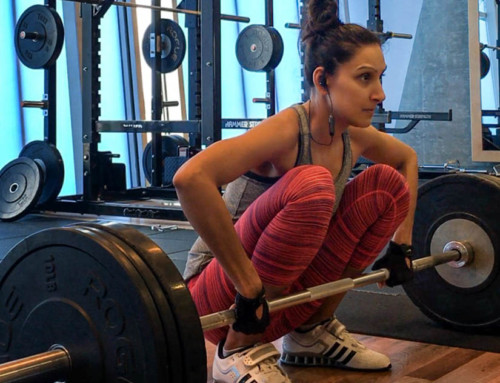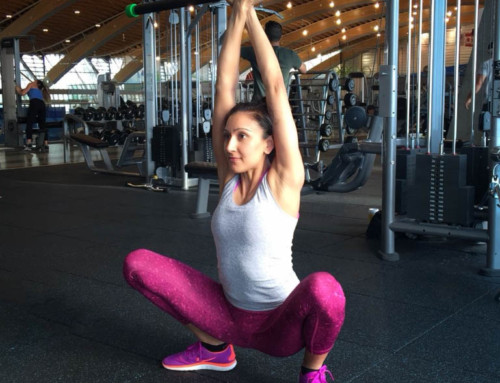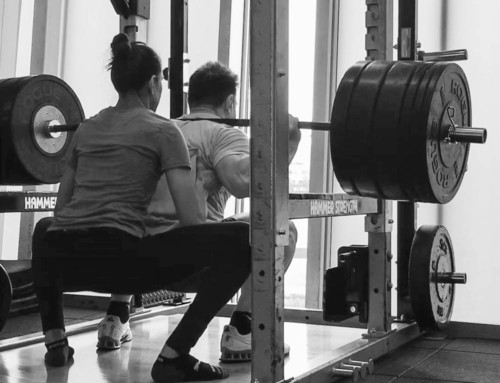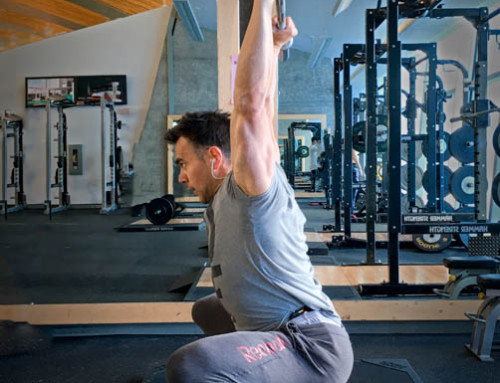Optimum fitness can be defined in one word – Performance. Practicing physical fitness develops more functional muscles, stronger bones, joints and connective tissue that leads to better balance, movement and less aches and pains. A leaner body further yields greater endurance and stamina; allowing you to perform your physical tasks with greater intensity for longer periods of time.
Optimum fitness means, your body’s ability to perform work. Specifics include: faster recovery from the flu, greater energy levels and stamina, greater force production (weight lifting) through endurance, strength, speed and balance, limited joint aches and pains, deeper sleep patterns, improved critical-thinking skills, to just name a few. We can all use more of these physical strengths.
The question then arrises, how do we attain optimum fitness?
Optimum Fitness – Stronger You, Inside Out
Your optimum fitness begins with the ability to have a strong system in order to fight off disease and/or infirmity. We all experience similar circumstances by getting a seasonal flu, living busy lives and battling daily stressors of various shapes and sizes. The difference between us as individuals, is the physical state of our systems. The stronger you are, the greater your rate of recovery; whether from a training session or flu symptoms. Your immunity (recovery system) corresponds to your physical state – this further determines your optimum fitness.
Our bodies are made up of solid skeleton bone base, layered with 650 muscles. These muscles are all attached through intricate system of connective tissues, bone to bone or bone to muscles – all designed to perform physical work. By staying active through running, lifting weights, working out, and playing sports, we seek out physical stimulus and generate a response. Thus, satisfying the body’s designed need.
For many of us, step towards optimum fitness, begins with lowering our body fat and increasing lean body mass. Higher lean body mass equates to more muscle tissue; which yields greater generation of force. Greater force produces, ability to do more work, which yields better performance.
Leaner You – Lower Body Fat Percentage
Stepping on a weight scale will give you a particular number calculated in either pounds (lbs) or kilograms (kg). This measured body weight is often comprised of two main components – body fat and lean body mass. Body fat can be further broken down into essential and storage fat. Essential body fat is necessary to maintain life and reproductive functions. Hence, women carry more fat then men. Storage fat is stored energy (extra calories), that can be used in times of low food supply. Lean body weight is everything else, mainly the skeleton and muscle tissue around it. Through evolution, we generated an ability to store energy – fat tissue being the best form of storing such energy. Stored fat is meant to be short term, as these reserves are designed to be utilized on a regular bases.
Body fat can be further broken down into essential and storage fat. Essential body fat is necessary to maintain life and reproductive functions. Hence, women carry more fat then men. Storage fat is stored energy (extra calories), that can be used in times of low food supply. Lean body weight is everything else, mainly the skeleton and muscle tissue around it. Through evolution, we generated an ability to store energy – fat tissue being the best form of storing such energy. Stored fat is meant to be short term, as these reserves are designed to be utilized on a regular bases.
Nutrition, along with proper exercise and rest, are key players in increasing performance. Focusing on nutrition for a moment, our modern lifestyle is a double-edged sword. In Western world, we have easy access to food and rarely go hungry. The downside to this continuous food supply is – our bodies have been pre-programmed through evolution to store excess food as energy for future times of need. This results in our increased waist sizes, weight gain, greater stress on our systems; placing the body’s performance below optimum.
By understanding our nutritional requirements and body’s natural desire to store energy, we can develop a habitual lifestyle that will tap into our fat reserves often. Fuelling ourselves with proper nutrition and allowing digestive time for food (rest); we will begin to correct our body’s energy. Exercise and proper rest for recovery, are obvious players when it comes to increasing lean body mass.
Faster You – Increased Lean Body Mass
Faster at performing work, be it running, lifting weights, metabolism, recover from flu and/or injury. Most of us are aware, increased muscle mass directly translates into increased strength and speed. In addition, it also increases metabolism – fat loss, recovery. Muscle building is a three part process – training, nutrition, rest. First working-out, resistance training, to stimulate and train muscles that we have, while building more at the same time. A strength training program will further maximize performance, utilizing fat reserves during post-workout recovery periods.
Eating nutrient-rich foods, high in lean proteins, vitamins and minerals will provide raw materials needed to build muscle, repair damaged tissues and recover energy reserves (glycogen levels).
Rest is the last component of this equation, which is vital to success but often overlooked. The body needs proper rest to recover from the physical demands that were placed upon it during training. Muscle mass is metabolically active. Even at rest, muscle is constantly building, re-paring, and replenishing itself – as it’s overall maintenance is high. More muscle mass equals more chemical processes. Therefore, more overall energy is required for it’s activation, recovery and repair. During rest, bulk of this energy is obtained from stored fatty acids. Hence, increasing your lean body mass is a super method to cut down your fat reserves.
Your Best Body Composition
Optimum fitness is body’s ability to perform physical work. Low body fat percentage and high lean body mass is the best body composition for performance.
Providing your body physical stimulation, through resistance training, running, cycling or playing sports are the best ways of keeping physically healthy. If you are interested in the Best Strength Training Program focusing on – Stronger, Leaner, Faster You! Learn more about The Stronger Leaner Faster Book here.






